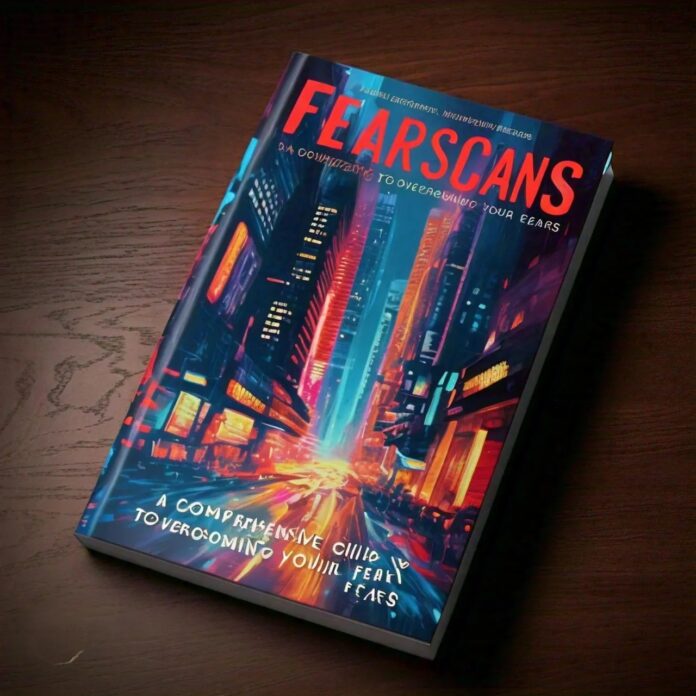Fearscans _ We all know fear to a certain extent, and in some cases it can act as a major obstruction to our normal day-to-day activities. Be it fear of performing on stage, of heights, or even of being in a crowded place, these fears do limit one’s potential and ability to achieve their objectives.
Thankfully, in the past decade or two, a rather invasive realization came to the fore in the field of psychology and self-practicum, as some therapists and psychologists termed it—fearscans. This article explains what these are, how they work, and how they can help you fight your fears.
What Are Fearscans?
Fearscans are the use of various technologies, including neuroimaging and biosensors, to assess individual fear responses. This involves tracking fear responses in the brain and body as they occur, thus giving an accurate picture of a person’s fear network. This information can further assist individuals in working on their issues, being well aware of the possible dangers.
The Science Behind Fearscans
Fearscans have a solid basis in neuroscience. When a fear is felt, the amygdala, which is responsible for emotion response, is activated. This area, as well as others, is functionally active and can be recorded with magnetic resonance imaging (MRI) and electroencephalographic (EEG) techniques. Once familiar with the biological routes of fear, clinicians may design specific techniques for patients to manage their fear.
How fearstays can assist you in confronting your fears
1. Assessing Triggers
Fearscans offer one of the main advantages for pinpointing particular elements of fear. They offer an additional level of practicality by allowing focused exposure to many stimuli and determining which situations generate the most intense emotions. This is important in understanding how best to devise a more individualized programme to deal with these fears.
2. Acceptance in Individuals
Once the fears have been localized to specific triggers, it becomes possible to devise individualized strategies aimed at treating those fears, perhaps through cognitive behavioral therapy (CBT), exposure therapy, or even mindfulness techniques specific to the individuals fear response pattern. The goal of such management strategies is to better equip the therapists by incorporating observations made from the fearstays.
3. Assessment over Time
Firearmscans do not only assist in the diagnosis of different fears; they also help in the assessment of the progress over the period. In particular, repeated follow-up scans allow assessing the brain and emotional activity of the patient in relation to treatments. This information assists in therapy modifications and also spurs individual participation as a change in self-outlook is observed.
Preparing for a Fearscan
For someone who is considering undergoing Fearscans the following steps may be useful:
1. Learn How it Will be Done
It is important to prepare oneself for the Fearscans by learning what will take place and how it will be done. There is an established method for doing it, so contact a mental health practitioner who specializes in Fearscans and ask him or her how to prepare for the procedure. It might be easy to approach the actual experience once the stages are understood and this helps to overcome the nerves.
2. Ponder upon your Fears
Try to take a day and think about what your fears are and what are the circumstances in which the fears arise. This time for self searching equips you with statements whereby during the first meeting, you have the chance to explain your fears to the shocked doctor and therefore speeding up the procedure.
3. Participate Continuously
When undergoing the Fearscan procedure, even if you may not have been instructed to speak, always voice your concerns out. If there is a sense of discomfort or anxiety during the scan, it is important to convey this, and the feedback is beneficial in considering the interpretation of the outcome.
Overcoming Your Fears: Other Options Circumventing Fearscans
Although fearscans offer a unique and scientific purpose in comprehension and management of fear, there are, however, several other techniques which you poate utilize alongside this procedure:
Cognitive Behavioral Therapy (CBT): CBT is concerned with the alteration of negative and self-defeating beliefs one has and which are instrumental in establishing fear. With a therapist’s assistance, you will learn ways to challenge unfounded fears and substitute them with reasonable, rather positive ones.
Exposure therapy: For instance, gradual exposure to the described scenario can help desensitize someone to the feared issues if done under controlled conditions. Often under supervision of a therapist, this methodis designed to heighten the fear arousal to a specific stimulus.
Mindfulness and relaxation techniques: Deep relaxation exercises like mindfulness, meditation or simply deep breathing can be effective not only in reducing anxiety but enhancing mental hygiene in a general perspective too.
Conclusion
Fearscans offer a revolutionary leap in the comprehension, or rather, the treatment, of fears. For with such knowledge, it is possible to face one’s fears and overcome them rather efficiently. Treating with fearscans as a primary tool is useful but therapeutic techniques should not be neglected as they can help achieve fear mastery more effectively. In case of having high levels of fear, one should be looking for fearscans as a particular choice within an extended arsenal of fear control strategies.


